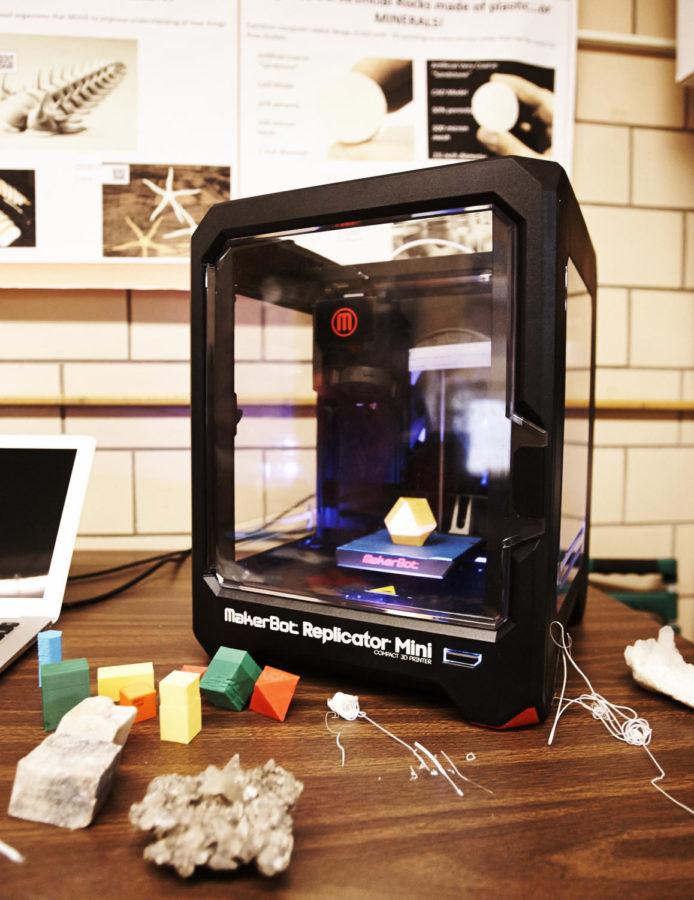3-D printing allows glimpse into past
This 3D printer is used to create physical replicas of fossils, rocks, or even planets. Often the scale of the object will be modified to make otherwise unobservable objects handheld.
September 24, 2014
Franek Hasiuk is bringing new perspectives to geology with the use of 3-D printers to produce copies of fossils, rocks and organisms. But that doesn’t mean he can’t have some fun with them.
Hasiuk, assistant professor of geological and atmospheric sciences, has even made a cardinal and gold Tyrannosaurus rex skull.
The Geological Fabrication Laboratory, or GeoFabLab, in the basement of the Science I Hall here at Iowa State is the home of two 3-D printers that Hasiuk is using to print a variety of interesting specimen to further research in the oil industry.
The printers use “slicer” software to convert models into layers of plastic that are printed one at a time on top of one another. They print in slices 0.1 to 0.3 millimeters thick.
“Our students are getting something that no one else gets right now, here in the basement of Science I,” Hasiuk said as he held up the T. rex skull in ISU cardinal and gold. “This model represents all the best aspects of a T. rex.”
The design data was edited and smoothed to create the ideal T. rex skull.
Hasiuk said the Smithsonian Museum in Washington, D.C., is currently working to scan an entire T. rex skeleton.
“Soon we will be able to download and print a real, unsimplified T. rex organism,” Hasiuk said. “It would be more complex and detailed than the one we have now.”
Hasiuk sees these models as extremely valuable and innovative to learning.
“It’s just intuitive,” Hasiuk said. “If you put something in someone’s hands, all of a sudden they know what to do.”
Students can simply play with these models and easily figure out how things would have worked in the original organism, Hasiuk said. His favorite model he’s printed thus far is the trilobite, also printed in cardinal and gold.
“What I really love about this model is that trilobites have been dead for 250 million years,” Hasiuk said. “I’ve never seen one move ever. No human has, but now you can print it out. You can make it move in your hands and you can see how it moves.”
The technology in the GeoFabLab is not only being used for educational purposes but also to research ways to extract oil from porous rocks.
“You may have heard that all the ‘easy oil’ is gone,” Hasiuk said. “The oil in all the really big pores that are really well-connected [is] easy to get out. But that represents only about half of the oil that’s in these rocks.”
The problem is finding ways to get the rest of the oil from the smaller pores.
Hasiuk has been collaborating with Joseph Gray at the Center for Nondestructive Evaluation in west Ames. Hasiuk and Gray are using the CT scan technology at the center to figure out how oil flows through porous rock.
“What he’s trying to do is understand what controls the rate of flow through the material,” Gray said.
Gray said the printer can control the size of the pores it prints. By observing how oil flows through only the large pores and comparing it to how the oil flows through the small pores, they can begin to better understand how to optimize extraction techniques.
“The issue in this case is by optimizing the extraction method, by utilizing knowledge of the pore structure and the rate that you would pull something through a rock, you can improve the yields of the oil fields,” Gray said.







